
What Is Artificial Intelligence
The term “artificial intelligence”, or AI, often makes people envision humanoid robots. For some of us, this prompts concerns about their ability to outsmart us. The notion of robots passing tests that blur the line between human and machine, often depicted in science fiction, adds to these worries, particularly when considering the potential for AI systems to act in self-interest and make decisions independently.
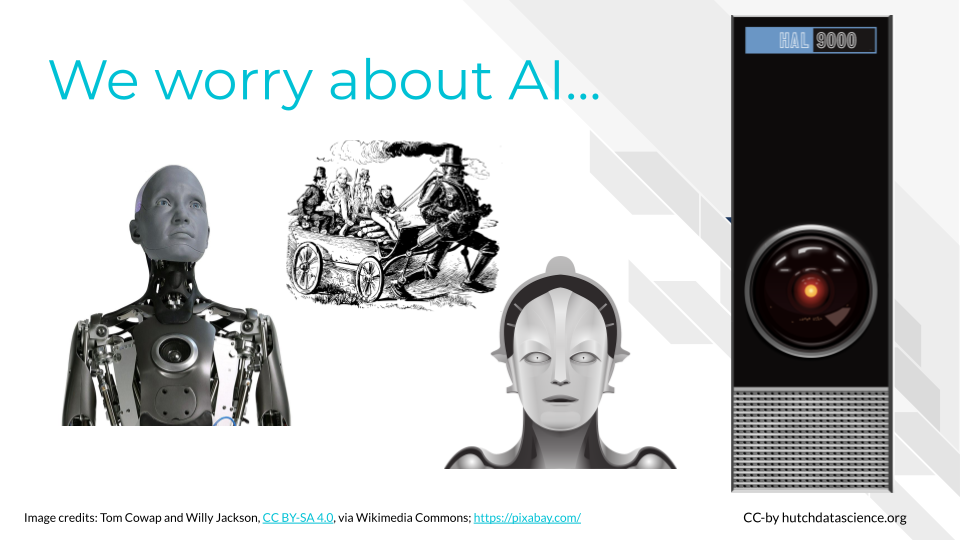
Specific and General Intelligence
Currently, no AI system can perform all the intellectual tasks that a human can. This is an active area of research, specifically into what’s called artificial general intelligence. We aren’t there yet. Currently, artificial intelligence systems are optimized to perform a specific task well, but not for general, multi-purpose tasks. For example, the AI application for recognizing voices can not be directly applied to drive cars, and vice versa. Similarly, a language translation app could not recognize images, and vice versa.
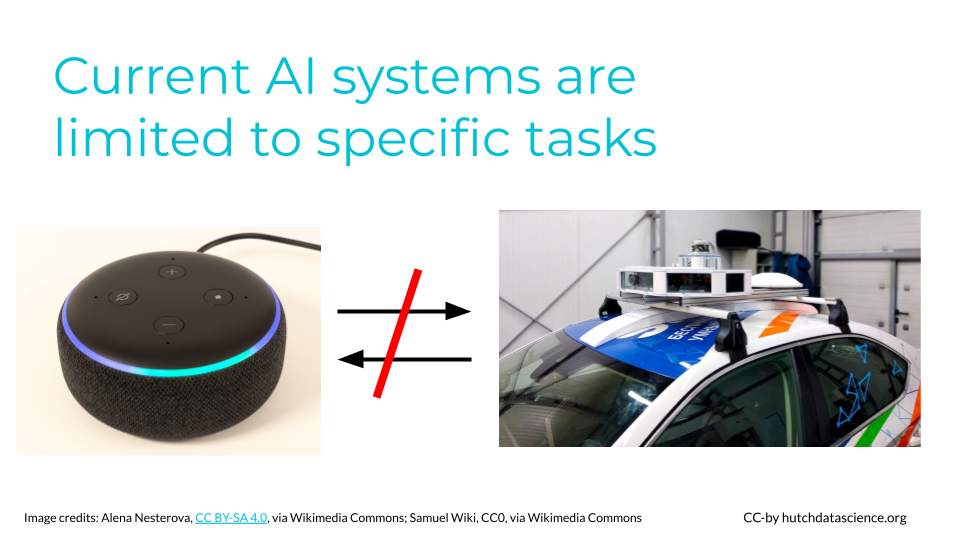
Shifting Goalposts
Defining what AI is can be tricky because what experts consider to be AI changes frequently. John McCarthy, one of the leading early figures in AI once said, “As soon as it works, no one calls it artificial intelligence anymore”.
For instance, 20 years ago, the idea of an email spam checker was new. People were surprised that an algorithm could identify junk email accurately, and called it “artificial intelligence”. Since this type of algorithm has become so common, it is no longer called “artificial intelligence”. This transition happened because we no longer think it is surprising that computers can filter spam messages. Because it is not learning something new and surprising, it is no longer considered intelligent.
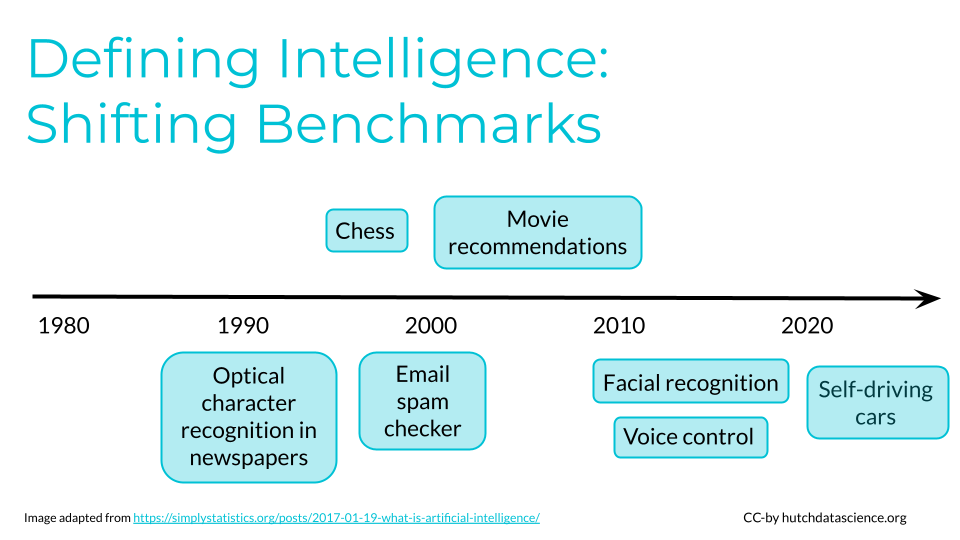
We often look at human intelligence the same way. For example, many years ago, only a few people knew how to use the internet. These people might have been considered extremely talented and intelligent. Now, the massive growth of online resources and social media mean that fluent internet use is almost required!
Artificial General Intelligence (AGI): A type of artificial intelligence that can understand, learn, and apply knowledge across a wide range of tasks, similar to the broad cognitive abilities of a human being. It represents the aspiration for machines to have versatile intelligence rather than focusing on specific, narrow domains. Check out the following lessons to learn more.
Our AI Definition
At its core, AI is about problem solving (Fogel 2022). But how does it do this? How hard does the problem have to be? There are no clear answers to these questions. Going forward in this course, we define AI as having the following features:
Dataset: AI needs data examples that can be used to train a statistical or machine learning model to make predictions.
Algorithm: AI needs an algorithm, or a set of procedures, that can be trained based on the data examples. That way, it can take a new example and execute a human-like task. For instance, the algorithm learns which images feature a cat from pre-labeled images. When given a new image, it decides whether the image has a cat in it.
Interface: AI needs a physical interface or software for the trained algorithm to receive a data input and execute the human-like task in the real world. For example, you might interface with a chatbot in your web browser.

As an example, consider Amazon Echo’s voice control device (Wikipedia 2023a). The data set consists of customer voices talking to Amazon Echo or other devices. The algorithm predicts what a new customer voice is asking it to do. Given human voice request, it may set a kitchen timer. Lastly, the interface, is a physical device with a microphone, speaker, and computer software running the algorithm and accessing the data. It is the part that will interact with humans.
What Is and Is Not AI
Let’s look at a few of examples. We can then decide whether or not the examples constitute AI.
Smartphones
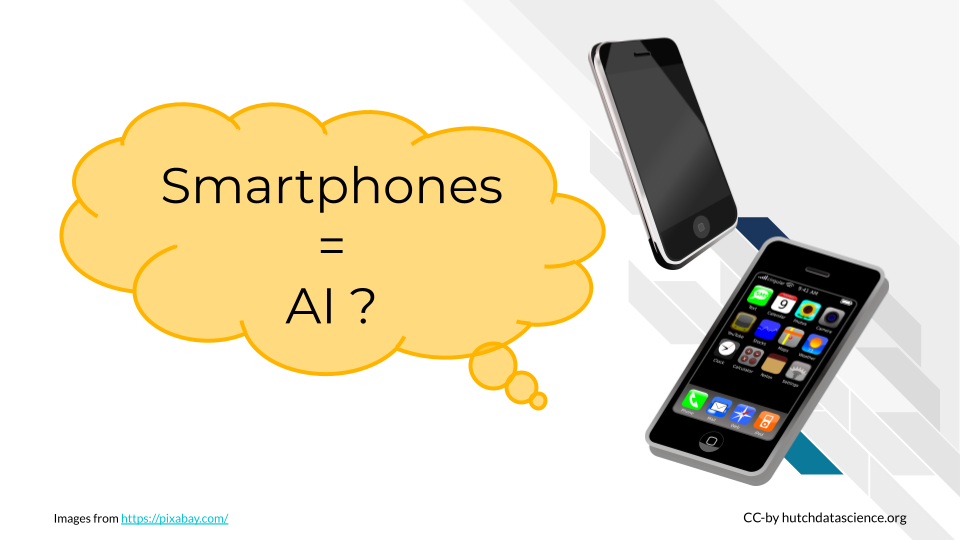
The name “smartphone” implies these devices are making decisions and are powered by AI. Let’s consider our three criteria:
Dataset: Smartphones do collect a lot of data. For example, they retain your text messages and collect motion tracking information.
Algorithm: The smartphone as a whole does not usually get trained with this data. However, some features like virtual voice assistants and facial recognition do adapt given your data.
Interface: Again, some features like voice assistants can be interacted with through the smartphone.
While there are some features on smartphones that are powered by AI models, like virtual voice assistants and facial recognition, the device as a whole isn’t considered AI.
Calculators
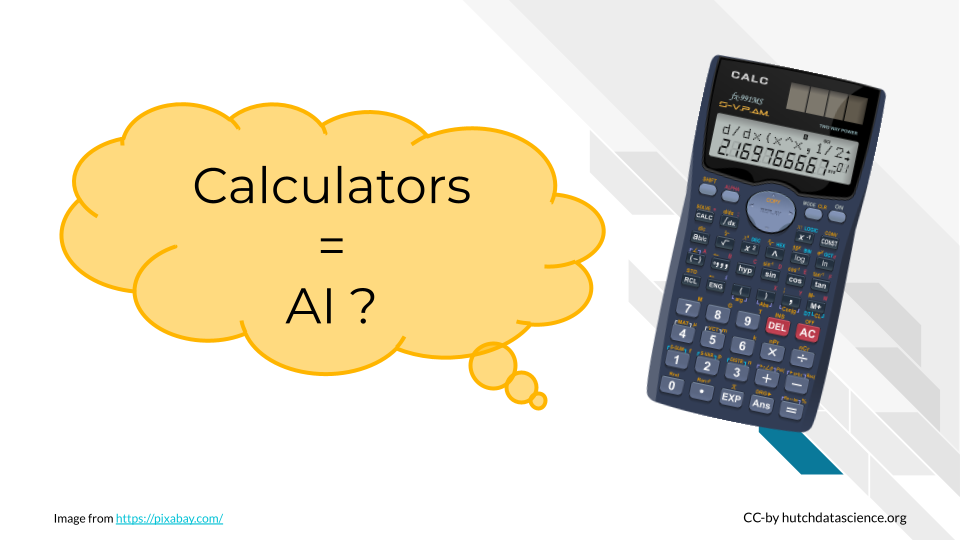
Many of us use basic calculators, as you might find in Microsoft Excel, every day. AI also makes many calculations. Is it just a scaled-up calculator?
Dataset: Calculators and spreadsheets can store data.
Algorithm: Calculators do not generally use this data to train algorithms. The procedures that are performed (addition, subtraction, etc.) are almost always predefined. However, some AI-powered assistants are starting to be integrated into software like Excel and Google Sheets.
Interface: Calculators do meet the criteria for an interface, whether through a physical device or software application.
Traditional calculators are not considered AI, because everything they can do is predefined by people.
Computer Programs
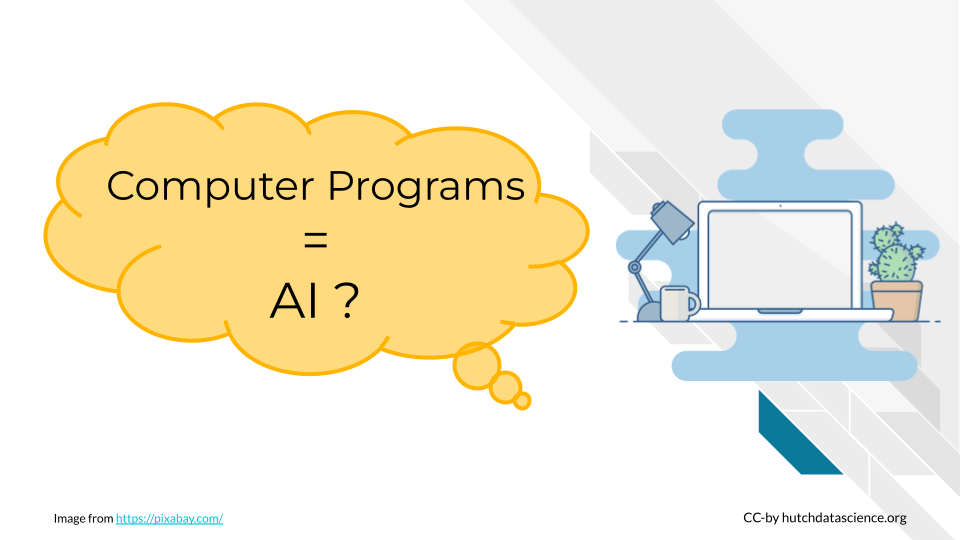
Like calculators, computers follow set procedures for problem solving and computation. Everyday computers use these procedures to help automate repetitive tasks and save time. However, this isn’t generally considered AI, because the computer’s algorithms aren’t being trained with new data you supply. AI systems exhibit the ability to adapt and handle new inputs for tasks that might be more complicated.
Examples of AI In the Real World
As we can see from the examples above, there are many instances of technology that are incredibly useful but are not considered AI. Without getting too into the details of how they work yet, let’s list some examples of AI in the real world and their applications.
Meta’s Advantage suite of tools helps advertisers produce content and target specific social media users.
Google Search is using generative AI to summarize search results in an “AI-powered snapshot of key information”.
Financial institutions use AI to detect fraud. For example, detecting the 1 audit risk in a database of 10 million entries.
In medicine, AI can help predict Alzheimer’s risk from MRI scans.
Global Plastic Watch uses satellite imagery and artificial intelligence to detect and monitor plastic waste sites globally.
Summary
The definition of artificial intelligence (AI) has shifted over time. We use the three part framework of data, algorithms, and interfaces to describe AI applications. You will need to consider specific technologies and whether they meet the criteria for being classified as AI using this framework. Adaptability and training with new data are key factors to keep in mind as we move further in the course.
Disclaimer: The thoughts and ideas presented in this course are not to be substituted for legal or ethical advice and are only meant to give you a starting point for gathering information about AI policy and regulations to consider.